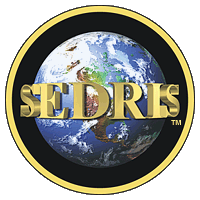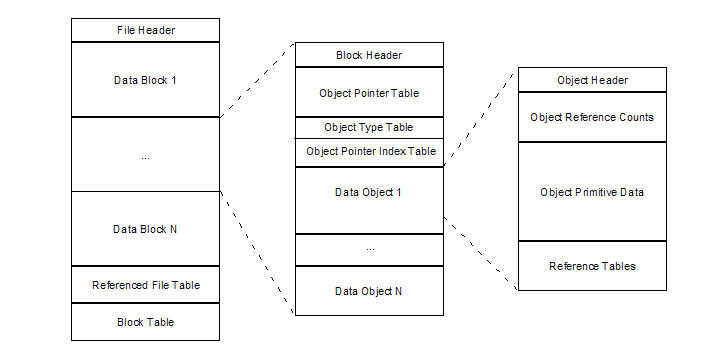
ISO/IEC 18023-2 — Abstract transmittal format
This clause specifies concepts behind the abstract structure that all encoded SEDRIS transmittals shall follow and that all concrete encodings shall support.
Table 4.1 contains the table of contents for this clause.
The SEDRIS abstract transmittal format (ATF) provides a platform independent interchange mechanism for SEDRIS transmittals. The ATF is a conceptual file format that defines the organization of a persistent SEDRIS transmittal.
A SEDRIS transmittal may be composed of one or more files. When a SEDRIS transmittal is comprised of more than one file, one of the files is the root file and all of the other files are object files. The root file is the one that is initially accessed when a SEDRIS transmittal is opened. SEDRIS transmittals may also reference files that exist outside the SEDRIS transmittal. Such files are called subsidiary files.
The ATF specifies an abstract structure that shall be followed by actual transmittal format encodings including that specified in Part 3 of ISO/IEC 18023. The ATF is realized by an encoding that maps the constructs defined herein into elements in one or more files according to a specific technique. Part 3 of this International Standard defines a binary encoding that has been named the SEDRIS transmittal format (STF) (see 2.[I18023-3]). Other encodings are allowed and would provide ATF representations for their own purposes.
The ATF specifies a conceptual representation of a SEDRIS transmittal for storage in a persistent form. The objects may be conceptually stored throughout one or more files. The exact representation of the SEDRIS transmittal is determined by the particular encoding. The ATF specifies the allowable structure that shall be satisfied by an encoded SEDRIS transmittal as detailed in Clause 5 – Transmittal structure.
In addition to the data embodied by objects, the ATF provides for the inclusion of format specific additional data necessary to organize the objects according to the dictates of each particular encoding. The additional information is represented in the abstract syntax as “external elements”. External elements may include file and block headers for a binary encoding (as shown in Figure 4.1) or end-of-line elements for a clear text encoding. The locations at which such items may appear are specified in the abstract syntax.

Figure 4.1 — Example binary encoded transmittal structure
Figure 4.1 depicts the possible form of a binary encoding of a SEDRIS transmittal. The specific encoding shall specify the actual realized organization of data allowed within that encoding. A SEDRIS transmittal may be expressed as one or more files depending on the characteristics of the specific encoding.